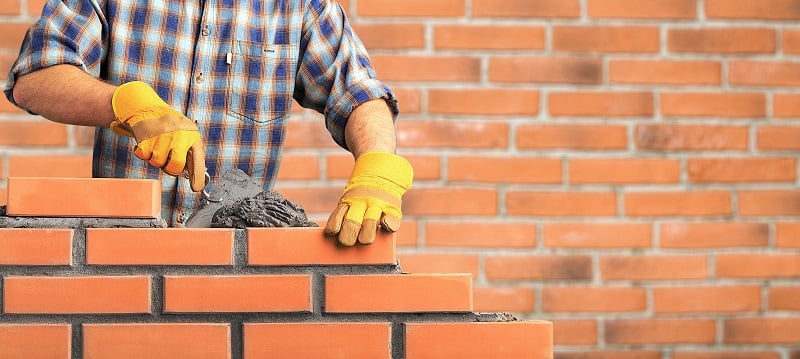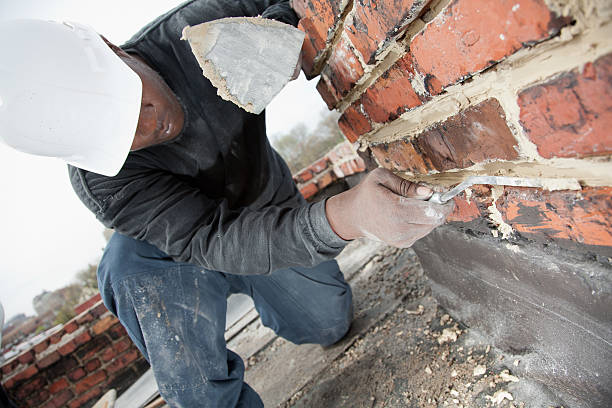Opening the Secrets of Sustainable Stonework Building And Construction Practices for Eco-Friendly Buildings
Amongst the myriad techniques to environment-friendly structure, lasting masonry construction stands out as a tried and true and sturdy approach that holds a riches of untapped capacity. From the option of products to innovative construction methods, the secrets to achieving sustainability within stonework building are multifaceted and intriguing.
Advantages of Sustainable Masonry Building And Construction
Embracing sustainable masonry building and construction practices not only lowers ecological influence but likewise supplies long-term economic benefits to builders and communities. By using products like recycled blocks, obstructs, and stones, contractors can dramatically decrease the carbon footprint of their jobs while advertising source efficiency. Furthermore, lasting stonework building and construction techniques, such as appropriate insulation and thermal mass residential or commercial properties, can improve power effectiveness within structures, bring about reduced operational costs gradually.
In addition, the sturdiness and durability of stonework frameworks add to long-lasting financial advantages. Structures created making use of sustainable masonry practices typically need much less upkeep and repair, translating to cost savings for contractors and homeowner. The long life of stonework products additionally makes certain that frameworks continue to be secure and protected, reducing the demand for regular restorations or replacements.
Eco-Friendly Masonry Products
Using eco-friendly stonework materials is a pivotal action in the direction of improving the sustainability of building practices and decreasing ecological impact while making the most of long-term financial advantages. Sustainable masonry products are sourced, created, and utilized in a manner that lowers general environmental influence. Materials such as recycled blocks, recovered stone, and lasting concrete blocks are coming to be progressively popular options for eco-conscious contractors. Recycled blocks, for instance, not just divert waste from landfills yet also call for less energy to create contrasted to brand-new bricks. Recovered stone offers a special aesthetic appeal while decreasing the demand for new quarrying. Lasting concrete blocks integrate recycled accumulations and may feature better insulation residential properties, adding to power effectiveness in structures.
Furthermore, natural materials like adobe, rammed earth, and straw bales provide outstanding thermal mass homes, minimizing the demand for home heating and cooling down power. These products are commonly in your area readily available, advertising local economic climates and minimizing transportation-related carbon discharges. By choosing environment-friendly stonework materials, building projects can substantially lower their environmental footprint and contribute to the production of much healthier, a lot more sustainable built environments.
Energy-Efficient Stonework Strategies
Energy performance plays an important role in boosting the sustainability of masonry building practices. One crucial energy-efficient masonry method is the usage of thermal mass, which entails incorporating dense products like concrete or brick right into the structure's framework to soak up and keep warmth.

Technologies in Lasting Stonework
Recent developments in lasting stonework techniques have produced cutting-edge methods chrysler jeep dodge ram that are reshaping the construction sector. One such advancement is the advancement of self-healing concrete, which utilizes microorganisms embedded within the concrete to heal cracks autonomously. This innovation not just reduces maintenance costs however additionally boosts the longevity of masonry structures, adding to their sustainability.
Another noteworthy development is the use of recycled accumulations in stonework construction - masonry contractor. By including materials such as smashed ceramic waste or recycled glass into concrete blends, building contractors can lower the environmental influence of building and construction projects while preserving architectural stability. This technique not only draws away waste from landfills yet likewise conserves natural deposits, making it a vital innovation in sustainable masonry building
Moreover, the combination of digital design devices, such as Building Details Modeling (BIM), is revolutionizing the way stonework frameworks are prepared and built. BIM enables more precise calculations, reduced product waste, and improved power effectiveness, eventually leading to even more lasting structure methods. These advancements collectively signify an appealing future for sustainable stonework building and construction in the age of green structures.
Future Trends in Stonework Sustainability
With the ingenious strides made in lasting masonry techniques, the future trends in masonry sustainability are poised to further reinvent the building and construction sector. Among the vital patterns forming the future of stonework sustainability is the boosted combination of modern technology. Developments such as Building Info Modeling (BIM) and virtual reality simulations are being utilized to maximize stonework building and construction procedures, leading to decreased material waste and boosted power performance in buildings.
Moreover, the development of novel sustainable materials is set to play a considerable duty in boosting the eco-friendliness of masonry construction. masonry contractor. Developments like self-healing concrete, recycled aggregates, and bio-based binders are getting grip for their capability to lessen ecological effect while preserving structural stability

Verdict
In verdict, sustainable stonework building and construction methods provide numerous advantages for eco-friendly structures. By making use of environmentally friendly materials and energy-efficient techniques, stonework can add to an extra sustainable constructed setting. Technologies in lasting masonry are see this website continuously being established to even more enhance the ecological performance of structures. Looking towards the future, the trend of stonework sustainability is expected to grow, leading to even more ecologically friendly and energy-efficient building and construction methods in the years ahead.